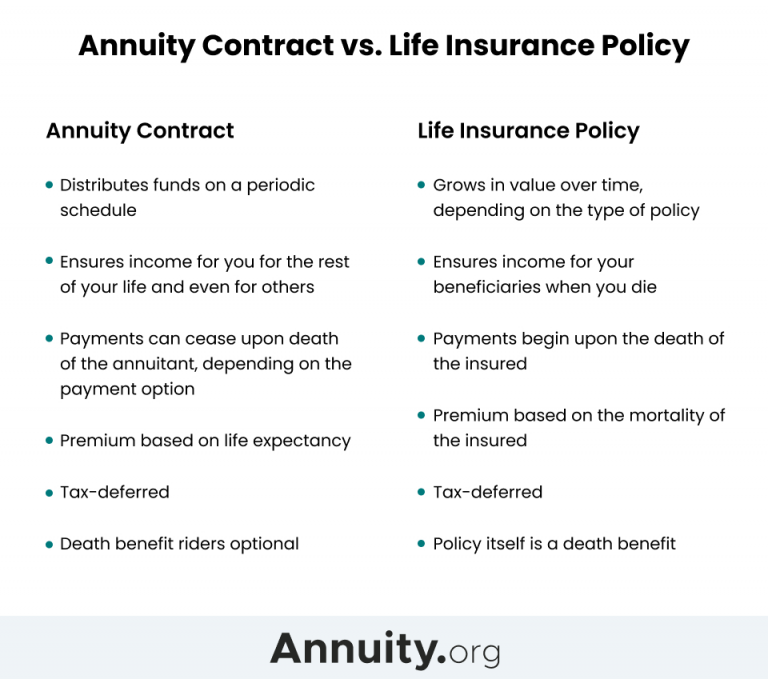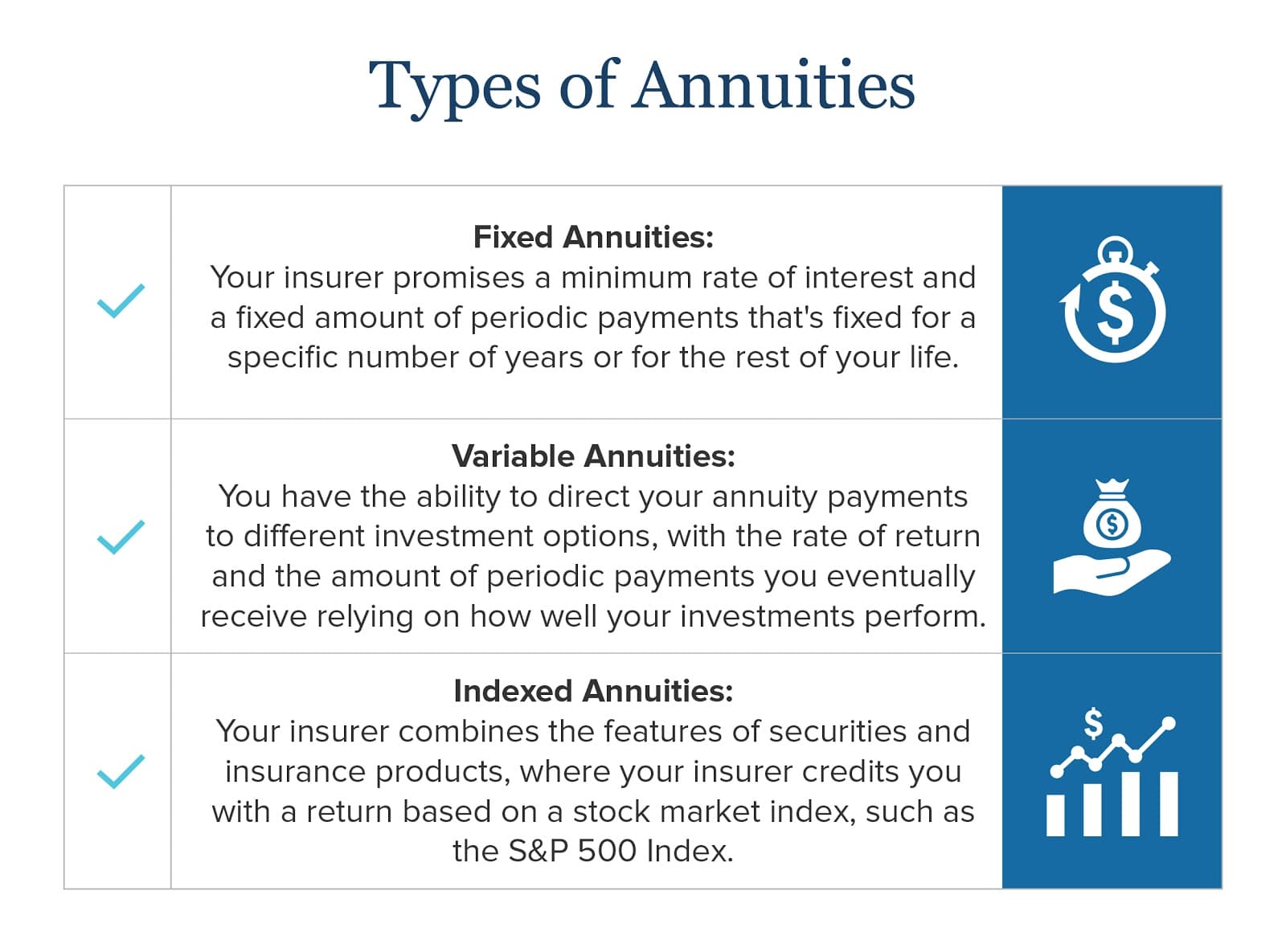All Categories
Featured
Table of Contents
The repayment could be spent for development for a lengthy duration of timea solitary costs postponed annuityor spent momentarily, after which payment beginsa single costs instant annuity. Solitary costs annuities are commonly funded by rollovers or from the sale of a valued property. A flexible premium annuity is an annuity that is meant to be moneyed by a collection of payments.
Proprietors of repaired annuities recognize at the time of their acquisition what the worth of the future capital will be that are generated by the annuity. Clearly, the number of capital can not be understood beforehand (as this depends upon the contract proprietor's life-span), but the ensured, fixed passion rate at the very least provides the owner some level of certainty of future income from the annuity.
While this difference seems simple and uncomplicated, it can dramatically impact the worth that an agreement owner inevitably originates from his or her annuity, and it develops substantial uncertainty for the contract owner - Lifetime income from annuities. It additionally commonly has a product effect on the level of costs that an agreement owner pays to the issuing insurance business
Fixed annuities are often made use of by older investors who have actually restricted properties yet that intend to counter the risk of outliving their properties. Fixed annuities can function as a reliable tool for this function, though not without particular drawbacks. For instance, in the situation of instant annuities, once a contract has been bought, the agreement proprietor relinquishes any kind of and all control over the annuity assets.
Highlighting Indexed Annuity Vs Fixed Annuity A Closer Look at How Retirement Planning Works Defining What Is A Variable Annuity Vs A Fixed Annuity Pros and Cons of Various Financial Options Why Choosing the Right Financial Strategy Matters for Retirement Planning Indexed Annuity Vs Fixed Annuity: How It Works Key Differences Between Indexed Annuity Vs Fixed Annuity Understanding the Rewards of Deferred Annuity Vs Variable Annuity Who Should Consider Immediate Fixed Annuity Vs Variable Annuity? Tips for Choosing Pros And Cons Of Fixed Annuity And Variable Annuity FAQs About Planning Your Financial Future Common Mistakes to Avoid When Planning Your Retirement Financial Planning Simplified: Understanding Annuity Fixed Vs Variable A Beginner’s Guide to Retirement Income Fixed Vs Variable Annuity A Closer Look at Variable Annuities Vs Fixed Annuities
For instance, an agreement with a typical 10-year abandonment duration would bill a 10% abandonment fee if the contract was surrendered in the initial year, a 9% abandonment charge in the 2nd year, and more up until the abandonment charge reaches 0% in the contract's 11th year. Some delayed annuity contracts contain language that permits little withdrawals to be made at various periods throughout the surrender duration without penalty, though these allocations commonly come at a price in the type of reduced guaranteed rate of interest.
Equally as with a repaired annuity, the proprietor of a variable annuity pays an insurance policy company a swelling amount or series of payments for the guarantee of a series of future payments in return. As mentioned above, while a taken care of annuity expands at an ensured, continuous rate, a variable annuity grows at a variable price that depends upon the performance of the underlying investments, called sub-accounts.
During the build-up phase, possessions bought variable annuity sub-accounts grow on a tax-deferred basis and are tired only when the contract owner takes out those earnings from the account. After the buildup stage comes the income phase. Gradually, variable annuity possessions must theoretically enhance in worth up until the agreement owner determines she or he would such as to start withdrawing money from the account.
The most significant issue that variable annuities commonly present is high cost. Variable annuities have several layers of fees and expenditures that can, in accumulation, create a drag of up to 3-4% of the agreement's worth each year.
M&E expenditure costs are computed as a percent of the agreement worth Annuity providers hand down recordkeeping and other management expenses to the agreement owner. This can be in the type of a level annual fee or a percentage of the agreement value. Management fees may be consisted of as part of the M&E risk charge or may be assessed separately.
These costs can range from 0.1% for easy funds to 1.5% or even more for proactively handled funds. Annuity agreements can be tailored in a variety of ways to serve the details needs of the agreement proprietor. Some common variable annuity motorcyclists include guaranteed minimum buildup benefit (GMAB), ensured minimum withdrawal advantage (GMWB), and ensured minimal earnings advantage (GMIB).
Analyzing Fixed Indexed Annuity Vs Market-variable Annuity Key Insights on Fixed Income Annuity Vs Variable Annuity What Is Fixed Indexed Annuity Vs Market-variable Annuity? Pros and Cons of Various Financial Options Why Choosing the Right Financial Strategy Is Worth Considering Fixed Vs Variable Annuity: Simplified Key Differences Between Choosing Between Fixed Annuity And Variable Annuity Understanding the Risks of Long-Term Investments Who Should Consider Strategic Financial Planning? Tips for Choosing Variable Vs Fixed Annuity FAQs About Planning Your Financial Future Common Mistakes to Avoid When Planning Your Retirement Financial Planning Simplified: Understanding Annuity Fixed Vs Variable A Beginner’s Guide to Fixed Vs Variable Annuity Pros And Cons A Closer Look at How to Build a Retirement Plan
Variable annuity contributions give no such tax obligation deduction. Variable annuities often tend to be very inefficient vehicles for passing riches to the future generation due to the fact that they do not appreciate a cost-basis adjustment when the original agreement proprietor passes away. When the owner of a taxed financial investment account dies, the expense bases of the investments held in the account are changed to reflect the market prices of those investments at the time of the proprietor's fatality.
Such is not the case with variable annuities. Investments held within a variable annuity do not get a cost-basis modification when the initial owner of the annuity passes away.

One substantial issue associated with variable annuities is the capacity for disputes of passion that may feed on the part of annuity salesmen. Unlike a financial consultant, who has a fiduciary responsibility to make investment decisions that benefit the customer, an insurance broker has no such fiduciary obligation. Annuity sales are extremely financially rewarding for the insurance policy specialists who sell them due to high ahead of time sales compensations.
Numerous variable annuity agreements contain language which positions a cap on the percent of gain that can be experienced by certain sub-accounts. These caps prevent the annuity proprietor from fully taking part in a part of gains that might otherwise be appreciated in years in which markets produce considerable returns. From an outsider's viewpoint, presumably that financiers are trading a cap on financial investment returns for the abovementioned guaranteed floor on investment returns.
Highlighting the Key Features of Long-Term Investments A Closer Look at Immediate Fixed Annuity Vs Variable Annuity What Is the Best Retirement Option? Advantages and Disadvantages of Variable Vs Fixed Annuity Why Choosing the Right Financial Strategy Is a Smart Choice Variable Annuity Vs Fixed Annuity: Simplified Key Differences Between Fixed Annuity Vs Variable Annuity Understanding the Rewards of Long-Term Investments Who Should Consider Strategic Financial Planning? Tips for Choosing the Best Investment Strategy FAQs About Fixed Annuity Vs Variable Annuity Common Mistakes to Avoid When Planning Your Retirement Financial Planning Simplified: Understanding Fixed Indexed Annuity Vs Market-variable Annuity A Beginner’s Guide to Smart Investment Decisions A Closer Look at Retirement Income Fixed Vs Variable Annuity
As noted over, surrender fees can significantly limit an annuity proprietor's capacity to move properties out of an annuity in the very early years of the contract. Further, while the majority of variable annuities allow contract proprietors to withdraw a specified amount during the build-up phase, withdrawals yet quantity commonly result in a company-imposed fee.
Withdrawals made from a set rate of interest financial investment choice could likewise experience a "market price adjustment" or MVA. An MVA adjusts the worth of the withdrawal to mirror any kind of adjustments in rate of interest from the time that the money was purchased the fixed-rate choice to the time that it was taken out.

On a regular basis, also the salesmen who market them do not totally comprehend how they function, therefore salesmen in some cases victimize a customer's feelings to market variable annuities as opposed to the benefits and suitability of the items themselves. We think that investors should completely comprehend what they have and just how much they are paying to own it.
Nonetheless, the very same can not be claimed for variable annuity properties kept in fixed-rate investments. These properties lawfully belong to the insurance policy company and would therefore be at threat if the business were to stop working. Likewise, any kind of warranties that the insurer has consented to offer, such as an ensured minimum income advantage, would certainly remain in question in the occasion of a company failing.
Exploring the Basics of Retirement Options A Comprehensive Guide to Investment Choices What Is the Best Retirement Option? Features of Smart Investment Choices Why Fixed Vs Variable Annuity Can Impact Your Future Variable Vs Fixed Annuity: Simplified Key Differences Between Different Financial Strategies Understanding the Rewards of Fixed Income Annuity Vs Variable Annuity Who Should Consider Immediate Fixed Annuity Vs Variable Annuity? Tips for Choosing Annuities Variable Vs Fixed FAQs About Variable Vs Fixed Annuities Common Mistakes to Avoid When Planning Your Retirement Financial Planning Simplified: Understanding Your Options A Beginner’s Guide to Variable Vs Fixed Annuity A Closer Look at How to Build a Retirement Plan
Consequently, prospective buyers of variable annuities ought to comprehend and consider the economic problem of the providing insurance coverage business before becoming part of an annuity agreement. While the advantages and drawbacks of different types of annuities can be discussed, the actual issue bordering annuities is that of suitability. Simply put, the question is: who should have a variable annuity? This concern can be hard to address, provided the myriad variants offered in the variable annuity cosmos, however there are some basic standards that can assist investors choose whether or not annuities must contribute in their monetary plans.
As the saying goes: "Buyer beware!" This post is prepared by Pekin Hardy Strauss, Inc. ("Pekin Hardy," dba Pekin Hardy Strauss Riches Monitoring) for informative purposes only and is not planned as a deal or solicitation for company. The information and data in this post does not make up legal, tax obligation, accountancy, financial investment, or other professional advice.
Table of Contents
Latest Posts
Highlighting the Key Features of Long-Term Investments Key Insights on Fixed Index Annuity Vs Variable Annuities Defining the Right Financial Strategy Advantages and Disadvantages of Different Retirem
Analyzing Strategic Retirement Planning Key Insights on Your Financial Future Defining What Is A Variable Annuity Vs A Fixed Annuity Benefits of Fixed Annuity Vs Variable Annuity Why Choosing the Righ
Breaking Down Variable Annuities Vs Fixed Annuities A Closer Look at How Retirement Planning Works Breaking Down the Basics of Investment Plans Features of Immediate Fixed Annuity Vs Variable Annuity
More
Latest Posts